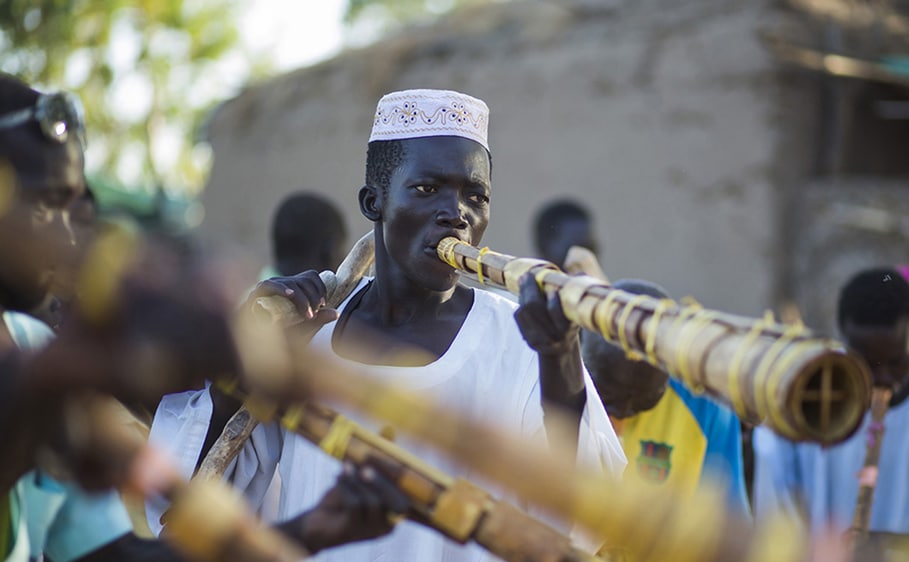
The rich and varied music of Sudan has traditional, rural, northeastern African roots and also shows Arabic, Western or other African influences, especially on the popular urban music from the early 20th century onward. Since the establishment of big cities like Khartoum as melting pots for people of diverse backgrounds, their cultural heritage and tastes have shaped numerous forms of modern popular music. In the globalized world of today, the creation and consumption of music through satellite TV or on the Internet is a driving force for cultural change in Sudan, popular with local audiences as well as with Sudanese living abroad.
Even after the secession of South Sudan in 2011, the Sudan of today is very diverse, with five hundred plus ethnic groups spread across the territory of what is the third largest country in Africa. The cultures of its ethnic and social groups have been marked by a complex cultural legacy, going back to the spread of Islam, the regional history of the slave trade and by indigenous African cultural heritage. Though some of the ethnic groups still maintain their own African language, most Sudanese today use the distinct Sudanese version of Arabic.
Due to its geographic location in Africa, where African, Arabic, Christian and Islamic cultures have shaped people’s identities, and on the southern belt of the Sahel region, Sudan has been a cultural crossroads between North, East and West Africa, as well as the Arabian Peninsula, for hundreds of years. Thus, it has a rich and very diverse musical culture, ranging from traditional folk music to Sudanese popular urban music of the 20th century and up to the internationally influenced African popular music of today.
Musical traditions have always enjoyed great popularity with most Sudanese. Apart from singing in Standard Arabic, the majority of Sudanese singers express their lyrics in Sudanese Arabic, thereby touching the feelings of their national audience as well as the growing number of Sudanese living abroad, notably in Egypt, Saudi Arabia and the Gulf countries. Even during times of wide-ranging restrictions of public life imposed by the government, public concerts or the celebration of weddings and other social events with music and dance have always been part of cultural life in Sudan.
As in other African regions, the traditional musical styles of Sudan are ancient, rich and diverse, with different regions and ethnic groups having many distinct musical traditions. Music in Africa has always been very important as an integral part of religious and social life of communities. Performances of songs, dance and instrumental music are used in rituals and social ceremonies like weddings, circumcision rites or to accompany the long camel treks of the Bedouins. In these performances, music always has been a social event, marked by the combination of performers, lyrics, music and the participation of the community, like dancing or other types of sharing a musical event. Traditional music and its performance have been handed down from generation to generation by accomplished musicians to younger generations and was not written down, except in recent times by formally trained musicians or ethnomusicologists.
In contrast to traditional Arabic music, most Sudanese music styles are pentatonic, and the simultaneous beats of percussion or singing in poly rhythms are further prominent characteristics of Sudanese sub-Saharan music. The music of Sudan also has a strong tradition of lyrical expression that uses oblique metaphors, speaks about love, the history of a tribe or the beauty of the country.